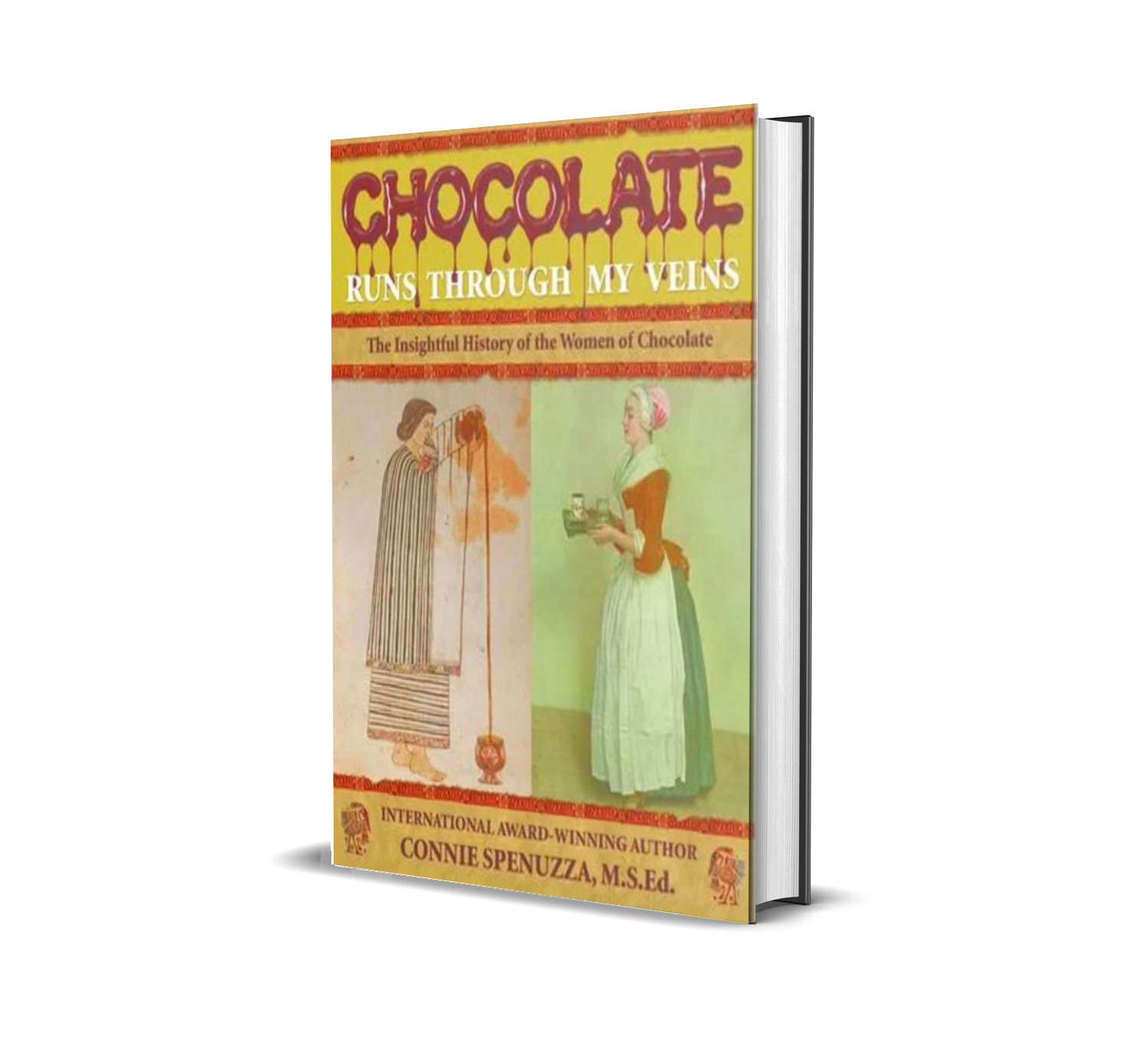“A riveting historical investigation into how the worlds of women and chocolate intersected.”
ABOUT THE AUTHOR
Connie Spenuzza M.S. Ed., received First Place from the International Latino Book Awards for her novels Lucia Zárate (2017), Missing in Machu Picchu (2013) and Traces of Bliss (2012). Her travel memoir Jubilant Journeys (2019) was awarded Second Place, following first place winner and Nobel Peace Prize nominee José Andrés. The Association of American Publishers and the Las Comadres International organization selected her novels to the National Latino Book Club. In 2017, Foreword Reviews selected Lucía Zárate as Indie Book Finalist, Parisian Promises (2014) was the runner-up for the Paris Book Award and Gathering the Indigo Maidens (2011) was a finalist for the Mariposa Award. Her children’s bilingual fables: Olinguito Speaks Up was endorsed by the Smithsonian Institution, Lalo Loves to Help, and Howl of the Mission Owl have received numerous awards. Her pen name for the works above is Cecilia Velástegui. Her 2021 art history book: Spanish Colonial Paintings Paired with European Engravings, debuted with an immersive multimedia exhibit at the California landmark Mission San Juan Capistrano. Connie was born in Ecuador and raised in California and France. She received her graduate degree from the University of Southern California, speaks four languages, and has traveled to 127 countries. Connie donates the proceeds from the sale of her books to the fight against human trafficking. She lives in Dana Point, California.












